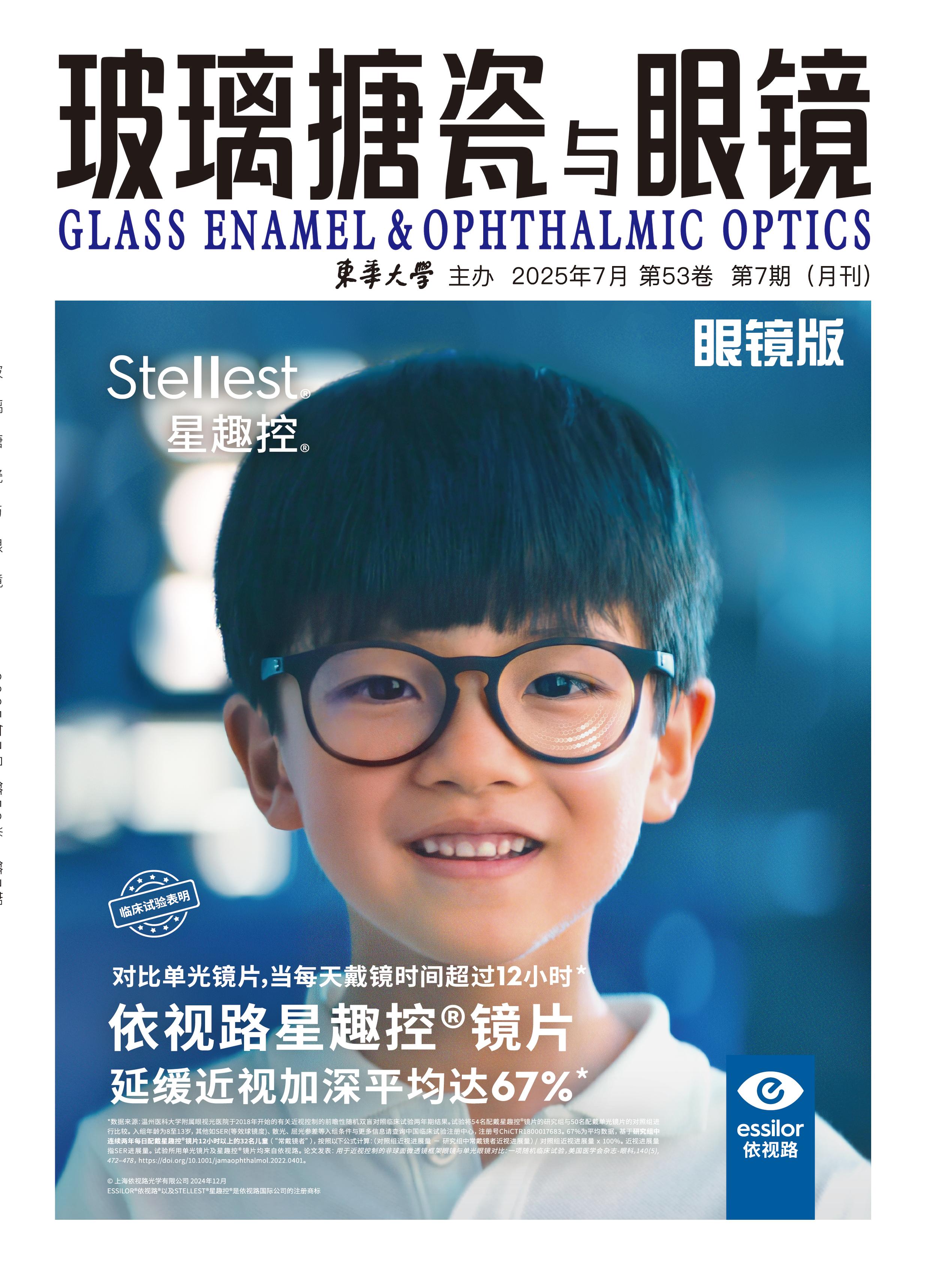
The effects of TiO2 and K2O on the structure and morphology of low melting point Bi2O3-B2O3-P2O5 glass powder were studied by XRD, FTIR and Raman. Results show that the added modifiers TiO2 and K2O entered into the glass powder network, resulting in changes in the structure and morphology of the glass powder. With the increase of K2O content, the glass powder became dispersed small particles, while the increase of TiO2 content promoted the growth of larger glass powder particles. This research is beneficial to passivation and protection of semiconductor materials.
The glass with excellent optical and dielectric properties was prepared by changing the composition of BaO-TiO2-SiO2 ternary system. The results show that with the increase of SiO2 content, TiO2 content decreases, when the mole fraction of BaO was 30%, the thermal expansion coefficient reached the minimum when the mole fraction of SiO2 was 40%, while Tg and Tp first increase and then decrease. The transmissivity of the glass sample in the near ultraviolet region was very small. After the crystallization treatment for 2 h, the proportion of crystals increased first and then decreased, and only Ba2TiSi2O8 crystal phase was precipitated. During the study of the dielectric properties of glass samples, it was found that the dielectric constant gradually decreased with the decrease of TiO2 content, the dielectric loss first decreased and then increased, and the dielectric properties of glass ceramics first increased and then decreased. When the mole fraction of TiO2 was 30%, with the increase of SiO2 content and the decrease of BaO content, the thermal expansion coefficient of the glass gradually decreased, while Tg and Tp gradually increased. With the decrease of BaO content, the content of precipitated crystals gradually decreased, and the dielectric constant and loss of the samples gradually decreased. This study provides a reference for the systematic study of dielectric properties of BaO-TiO2-SiO2 system glass.
The stainless steel water cup used in daily life is easy to react with a variety of chemical components contained in water such as tea to precipitate heavy metals in stainless steel. The glass coating has good stability and corrosion resistance, which is widely used in many fields. Using tetraethyl orthosilicate as raw material, SiO2 inorganic coating was prepared on the inner surface of stainless steel thermos cup by sol-gel method. Compared with the samples without coating, the effect of coating on the precipitation of heavy metals was studied. The morphology of the coating surface was observed by electron microscope, and the adhesion of the coating was tested. Results show that the coating has an obvious effect on reducing the precipitation of heavy metals lead and cadmium. The coating has uniform particle distribution and good adhesion.
The causes and countermeasures of glass plate fold in liquid crystal glass production were analyzed and discussed. When the furnace body temperature deviates from the normal set temperature range, the glass plate of annealing furnace will fold. To eliminate the fold by changing the temperature difference of furnace body through technology and equipment, rapid and effective countermeasures can be taken based on the wrinkles generated in the current production.
The development history of China’s LCD substrate glass industry in chronological order and industry participants with the development of thin-film transistor liquid crystal display (TFT-LCD) industry in China were reviewed. In the process of industrial development for more than 30 years, the technical barriers of G8.5 series substrate glass were finally achieved after countless explorations and breakthroughs, during the 13th Five-Year Plan period under the support of the state and the efforts of enterprises, therefore realizing the localization of substrate glass for high-generation large-size LCD panels in China. However, LCD substrate glass industry in China is still far from being bigger and stronger. In order to realize the independence and controllability of LCD substrate glass industry in China as soon as possible, the government, industry, academia, researcher and user must work together to contribute to the supplementary and enhancement of display industry chain.










